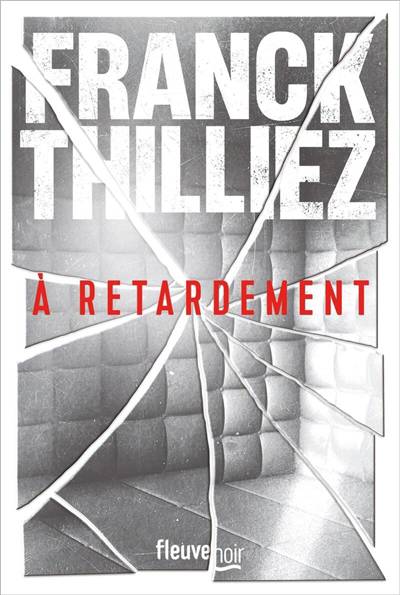
- Retrait gratuit dans votre magasin Club
- 7.000.000 titres dans notre catalogue
- Payer en toute sécurité
- Toujours un magasin près de chez vous
- Retrait gratuit dans votre magasin Club
- 7.000.0000 titres dans notre catalogue
- Payer en toute sécurité
- Toujours un magasin près de chez vous
A History of the Oratorio
Vol. 1: The Oratorio in the Baroque Era: Italy, Vienna, Paris
Howard E Smither
Livre broché | Anglais
144,45 €
+ 288 points
Format
Description
Howard Smither has written the first definitive work on the history of the oratorio since Arnold Schering published his Geschichte des Oratoriums in 1911. This volume is the first of a four-volume comprehensive study that offers a new synthesis of what is known to date about the oratorio.
Volume 1, divided into three parts, opens with the examination of the medieval, Renaissance, and early Baroque antecedents and origins of the oratorio, with emphasis on Rome and Philip Neri's Congregation of the Oratory and with special attention to the earliest works for which the term oratorio seems appropriate. The second part recounts the development of the oratorio in Italy, circa 1640-1720. It reviews the social contexts, patrons, composers, poets, librettos, and music of the oratorio in Italy, especially in Vienna and Paris.
The procedure adapted throughout the work is to treat first the social context, particularly the circumstances of performance of the oratorio in a given area and period, then to treat the libretto, and finally the music. For each geographic area and period, the author has selected for special attention a few oratorios that appear to be particularly important or representative. He has verified the information offered in the specialized literature whenever possible by reference to the music or documents. In a number of areas, particular seventeenth-century Italy, in which relatively few previous studies have been undertaken or secondary sources have proven to be inadequate, the author has examined the primary sources in manuscript and printed form -- music, librettos, and documents of early oratorio history. Impressive research and intelligent integration of disparate elements make this complicated, diffuse subject both readable and accessible to the student of music.
Volume 2, The Oratorio in the Baroque Era: Protestant Germany and England, and Volume 3, The Oratorio in the Classical Era, continue and expand the study of oratorio history. Although this series was originally announced as a three-volume study, Smither will conclude with a fourth volume.
This new work--the first English-language study of the history of the oratorio will become the standard work on its subject and an enduring contribution to music and scholarship.
Originally published in 1977.
A UNC Press Enduring Edition -- UNC Press Enduring Editions use the latest in digital technology to make available again books from our distinguished backlist that were previously out of print. These editions are published unaltered from the original, and are presented in affordable paperback formats, bringing readers both historical and cultural value.
Volume 1, divided into three parts, opens with the examination of the medieval, Renaissance, and early Baroque antecedents and origins of the oratorio, with emphasis on Rome and Philip Neri's Congregation of the Oratory and with special attention to the earliest works for which the term oratorio seems appropriate. The second part recounts the development of the oratorio in Italy, circa 1640-1720. It reviews the social contexts, patrons, composers, poets, librettos, and music of the oratorio in Italy, especially in Vienna and Paris.
The procedure adapted throughout the work is to treat first the social context, particularly the circumstances of performance of the oratorio in a given area and period, then to treat the libretto, and finally the music. For each geographic area and period, the author has selected for special attention a few oratorios that appear to be particularly important or representative. He has verified the information offered in the specialized literature whenever possible by reference to the music or documents. In a number of areas, particular seventeenth-century Italy, in which relatively few previous studies have been undertaken or secondary sources have proven to be inadequate, the author has examined the primary sources in manuscript and printed form -- music, librettos, and documents of early oratorio history. Impressive research and intelligent integration of disparate elements make this complicated, diffuse subject both readable and accessible to the student of music.
Volume 2, The Oratorio in the Baroque Era: Protestant Germany and England, and Volume 3, The Oratorio in the Classical Era, continue and expand the study of oratorio history. Although this series was originally announced as a three-volume study, Smither will conclude with a fourth volume.
This new work--the first English-language study of the history of the oratorio will become the standard work on its subject and an enduring contribution to music and scholarship.
Originally published in 1977.
A UNC Press Enduring Edition -- UNC Press Enduring Editions use the latest in digital technology to make available again books from our distinguished backlist that were previously out of print. These editions are published unaltered from the original, and are presented in affordable paperback formats, bringing readers both historical and cultural value.
Spécifications
Parties prenantes
- Auteur(s) :
- Editeur:
Contenu
- Nombre de pages :
- 507
- Langue:
- Anglais
Caractéristiques
- EAN:
- 9780807837740
- Date de parution :
- 16-04-12
- Format:
- Livre broché
- Format numérique:
- Trade paperback (VS)
- Dimensions :
- 150 mm x 234 mm
- Poids :
- 748 g

Les avis
Nous publions uniquement les avis qui respectent les conditions requises. Consultez nos conditions pour les avis.






